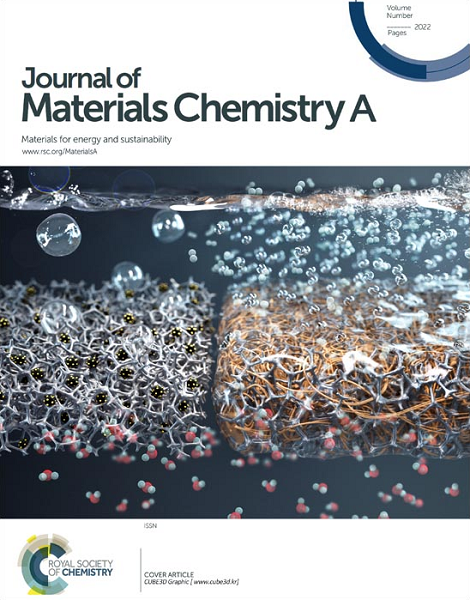Ni–P codoping engineered MoS2 basal planes for electrocatalytic water splitting: Insights from density functional theory
IF 10.7
2区 材料科学
Q1 CHEMISTRY, PHYSICAL
引用次数: 0
Abstract
The development of efficient bifunctional electrocatalysts for hydrogen evolution reaction (HER) and oxygen evolution reaction (OER) in water splitting is crucial for clean energy generation. This study investigated the potential of substitutional heteroatom doping in metallic 1T-phase MoS2 monolayers (MLs) using first-principles calculations. Ni and P codoping significantly improved the electrical conductivity and active site reactivity of the distorted 1T-MoS2 lattice. Doping modulated the electronic band structure, inducing spin-polarized states with enhanced d-band conductivity near the Fermi level. This manipulation, governed by the altered valence and conduction bands, also facilitated efficient charge transfer and reduced interfacial resistance. Furthermore, the strong dopant promoted the adsorption behavior at various active sites on the surface, lowering the Gibbs free energy for the HER (0.083 eV) and decreasing the OER overpotential (0.39 V). Therefore, the heteroatom doping of 1T-MoS2 MLs is a powerful strategy for developing advanced and low-cost electrocatalysts that can accelerate water splitting and operate without platinum.开发用于水分离中氢进化反应(HER)和氧进化反应(OER)的高效双功能电催化剂对于清洁能源的生产至关重要。本研究利用第一性原理计算研究了金属 1T 相 MoS2 单层(MLs)中替代性杂原子掺杂的潜力。掺杂镍和掺杂钯极大地改善了畸变 1T-MoS2 晶格的导电性和活性位点反应性。掺杂调节了电子能带结构,诱导了自旋极化态,增强了费米级附近的 d 带电导率。这种由改变的价带和导带控制的操作还促进了高效的电荷转移并降低了界面电阻。此外,强掺杂剂还促进了表面各活性位点的吸附行为,降低了 HER 的吉布斯自由能(0.083 eV),降低了 OER 的过电位(0.39 V)。因此,在 1T-MoS2 MLs 中掺杂杂原子是开发先进的低成本电催化剂的有力策略,这种催化剂可以加速水的分离,并且无需铂即可工作。
本文章由计算机程序翻译,如有差异,请以英文原文为准。
求助全文
约1分钟内获得全文
求助全文
来源期刊

Journal of Materials Chemistry A
CHEMISTRY, PHYSICAL-ENERGY & FUELS
CiteScore
19.50
自引率
5.00%
发文量
1892
审稿时长
1.5 months
期刊介绍:
The Journal of Materials Chemistry A, B & C covers a wide range of high-quality studies in the field of materials chemistry, with each section focusing on specific applications of the materials studied. Journal of Materials Chemistry A emphasizes applications in energy and sustainability, including topics such as artificial photosynthesis, batteries, and fuel cells. Journal of Materials Chemistry B focuses on applications in biology and medicine, while Journal of Materials Chemistry C covers applications in optical, magnetic, and electronic devices. Example topic areas within the scope of Journal of Materials Chemistry A include catalysis, green/sustainable materials, sensors, and water treatment, among others.
文献相关原料
| 公司名称 | 产品信息 | 采购帮参考价格 |
|---|
 求助内容:
求助内容: 应助结果提醒方式:
应助结果提醒方式:


